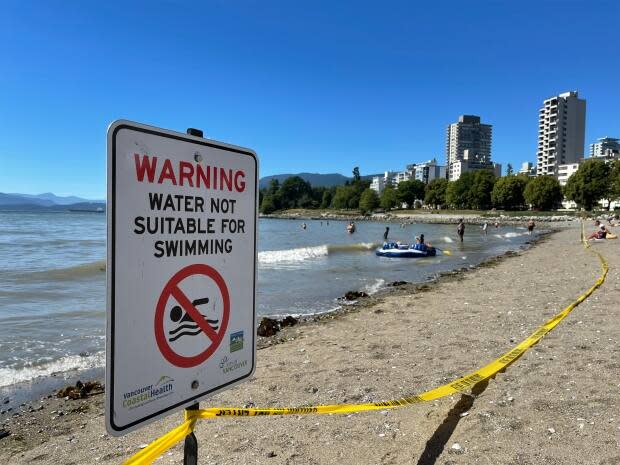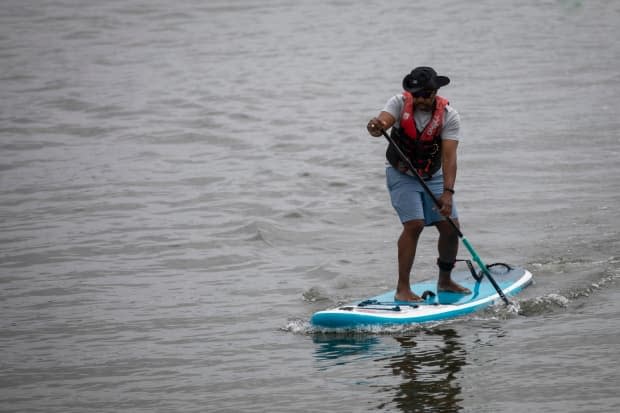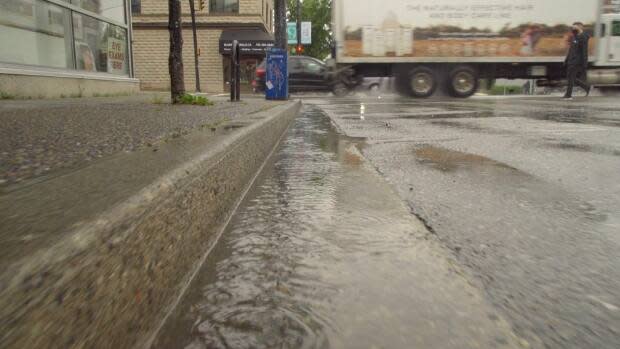E. coli a growing concern for some Vancouver residents

Rodrigo Silva de Paula calls himself a 'water man': he spends about 330 days a year in the ocean teaching paddle boarding.
But high E. coli levels in some of Vancouver's beaches are testing his patience.
"It is frustrating because it is not the first time it has happened," said 44-year-old who lives in Vancouver, B.C.
Silva de Paula is one of many residents calling on the city to do more to keep beaches safe from the bacteria.
Currently, Sandy Beach, Snug Cove and Trout Lake beaches in Vancouver are under E. coli advisories, meaning they are unsafe to swim in, according to Vancouver Coastal Health (VCH).
The bacteria can cause gastrointestinal illnesses, skin and eye infections.
According to VCH, E. coli can be naturally present in water; however there is increased risk of illness with exposure to higher concentrations of the bacteria.
For example, swimming beaches will close if a sample finds levels of E. coli exceeding 400 in 100 millilitres of water.
Among the highest levels reported this month were on July 1 at Deep Cove, where E. coli levels were at around 9200 per 100 millimetres of water. That advisory has since been lifted.

E. coli is a bacteria that is generally linked to fecal contamination of the water, says Brett Finlay, who specializes in biotechnology at the University of British Columbia.
"It's a way of saying the water is dirty, it's contaminated. And there's potential fecal contamination in there. And there might be danger involved in getting into that water and ingesting it," he said.
VCH says the lead contributors of E. coli in water include leaking septic tanks and discharge from boats and stormwater runoff after heavy rains.
Silva de Paula says compromising water with E. coli means livelihoods like his face more challenges, and people miss out on beach activities that can be affordable and a relief in hot summer weather.
"If you work in a place that everything under you can be relatively toxic, it really changes the way you operate," said Silva de Paula. He says clients also get worried about the bacteria.

Bob Putnam, co-owner of Deep Cove Kayak Centre — which offers rentals and lessons for water-based activities including stand-up paddle boarding and kayaking — says high E. coli levels on July 1 were unusual.
"It is a very high reading that they got. And that's kind of concerning a little bit as to why that happened," he said.
If an E. coli advisory is in effect, Putnam says his team changes the location of kayaking lessons, when those lessons involve teaching children about capsizing.
Others continue to kayak but avoid swimming, says Putnam.
"We would encourage people to wash their hands, we find most people aren't too concerned about it."
Mitigating E. coli for the future a work in progress
With climate change, it's likely that more heavy rains and flooding will contribute to greater levels of E. coli in Vancouver beaches, says Finlay.
"Adverse weather events always cause adverse infections, basically. And it stresses our current hygiene systems for sure."
To help reduce E. coli levels in water, it's important to address water quality as a whole, according to Finlay.
"What else is in the water that might be dirty? And how do we get that water cleaner?"
One effort from the City of Vancouver is separating combined sewer catchments and pump out stations, which they say is likely to have supported reductions in E. coli over the years.
In a combined sewer and stormwater system, city infrastructure can quickly become overwhelmed during major rainfall, resulting in excess untreated stormwater and sewage overflowing into a nearby body of water, according to the city.
A separated system means stormwater is collected through storm drains, allowing it to travel through different pipes from household sewage and other wastewater, and eliminates sewage overflow.

"Sewer separation is a very complex process that will cost the city billions of dollars in the coming years," a spokesperson for the city said in an email statement.
The city says its current outlook for the next 10 years will see sewer separation work in Dunbar, Balaclava, Angus, China Creek, Point Grey, Grandview Woodlands and Hastings-Sunrise sewer catchments.
"Currently we are working to replace about 1 per cent of the sewer system annually, with a target of eliminating combined sewer overflows by the year 2050."


